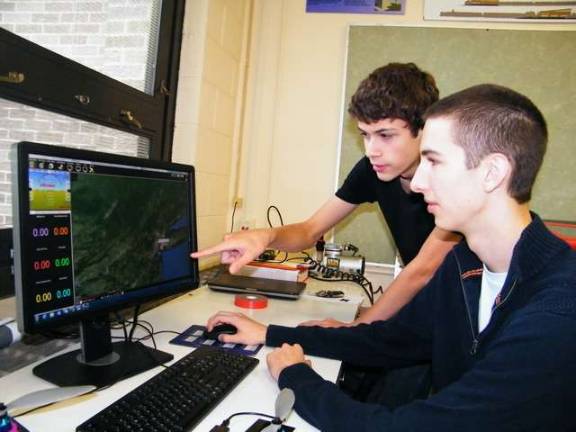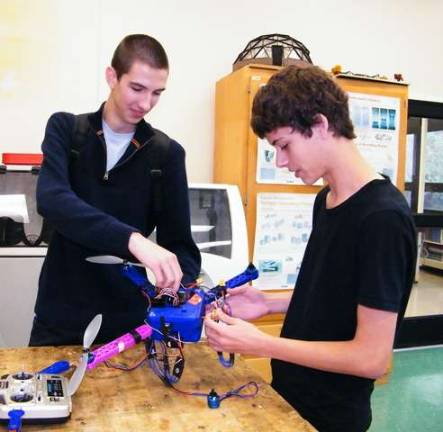Students explore world of Maker Faire


SUSSEX BOROUGH — Ever since its launch in the Bay Area in 2006, the annual science-county fair combination has attracted technology enthusiasts, crafters, educators, hobbyists, engineers, authors, artists and students from all around the world to share ideas and showcase inventions and works of art.
The Faire is presented by Maker Media, which publishes MAKE magazine and offers Do-It-Yourself electronics through online Maker Shed stores.
About 195,000 people attended the two flagship Maker Faires in the Bay Area and New York last year, with 98 other independently-produced Mini and Featured Maker Faires taking place around the world in places like Tokyo, Rome, Santiago and Oslo.
Recently, 25 High Point High School science, technology, architecture and engineering students visited the 5th Annual Maker Faire in New York, which ran Sept. 20-21.
“It’s a very exciting event,” science teacher Madelaine Travaille said, “with a lot of cutting edge ideas in science, engineering and art. It’s a great place for innovative students.”
Architecture and Computer Animation teacher Ben Kappler organized the trip.
“It’s a really great opportunity for kids to expand their horizons in the fields of technology, art and engineering,” he said. “The idea was to allow the Maker Faire to inspire students to return home and maybe begin work on some of the types of things they saw at the Faire.”
Kappler said the Maker Faire isn’t about competition and instead promotes creative freedom.
“You’re always hearing about competitions, where kids may get alienated in groups or stressed out because of pressure. We bring the premise behind Maker Faire back to High Point. Any extra, after-school projects that students take on is all self-directed, non-competitive and self-exploratory.”
Just ask seniors Corey Orlovsky and Bob Burghart, who have built their own quadcopter from the ground up.
A two-year project, Burghart says building the copter has taught him teamwork, group and management skills, and learning to deal with failure.
“The project was started a few years back by a group of students who made zero progress," he said. "With the help of a few other students, we redesigned and replaced almost everything on the copter using a MakerBot 3-D printer.”
According to Burghart, the printer melts thermoplastic from a liquid to solid, creating pieces to the copter in just an hour and a half.
“It’s the same type of technology NASA is using to deploy parts without having to fly out into space,” Burghart said.
Orlovsky and Burghart, who both plan to major in engineering in college, brought their copter with them to the Faire, where they were interviewed by Fox News for their achievement.
“It’s not just a quadcopter,” Burghart said. “It’s a drone, which separates it from a lot of other consumer quadcopters. It can fly autonomously. We got a really positive response to it at the Maker Faire. Unfortunately, we didn’t do everything quite right, so it’s not very photogenic. It has flown, but it recently crashed and we lost one of the arms.”
But that’s no big obstacle for the pair to overcome. According to Burghart and Orlovsky, each arm is designed to have a honeycomb structure, meaning only 15 percent of each arm is plastic.
“We’re not wasting any fuel, time or money,” Burghart said. “If something breaks, it is easily replaceable.”
Orlovsky said the helicopter contains a GPS, making it capable of being flown using any Windows or Macintosh computer or with any Android tablet or phone.
"With any Android phone, you can connect a 915 megahertz radio that has the ability to talk to the copter from a mile away," he said. "DroidPlanner, for example, is an Android app that uses Google Maps. We can tell it to go to Africa, and it would do its best to get there. It would die a few miles out, but it would certainly try.”
Custom-made, Burghart and Orlovsky consider the copter to be their first prototype.
“We are really going for a finished project,” says Burghart. “The next thing on the agenda for this year is to build a mini 3-D printer.”